
Signs of settling can be worrisome for new log homeowners. As mentioned in “Signs of Log Home Settling“, you can look for signs of settling. Often, you see it as small cracks in trim around windows, doors, foundations or in warped floors and roof lines. But what is contributing to settling. Below, we will:
- Consider All Contributing Factors
- Foundation Issues
- Major Log Settling Contributors
- When in doubt, call a professional
Consider All Contributing Factors
Consider all the contributing factors when looking for signs of settling. This will help you get a proper assessment. Have you noticed windows or doors being loose or hard to open? This could be a sign of settling. The pressure being forced down on your window or door frame is often the first sign.
Typical Signs of Settling
In addition, you may notice the door seems to shut more slowly than it once did or sticks when you try to open it. Your staircase may begin to lean, warp, or detach. The ceiling seems to be bowing. Your trim may buckle a bit, or a gap may be present where it had not been before. All these signs could also mean you have foundation issues, which must be addressed before a log home restoration. To return to the main menu, click 📋
To learn more about the major settling issues in log home contributing factors, read our article “Signs of Log Home Settling.” Your log home could be settling for several reasons, starting with your foundation. 📋
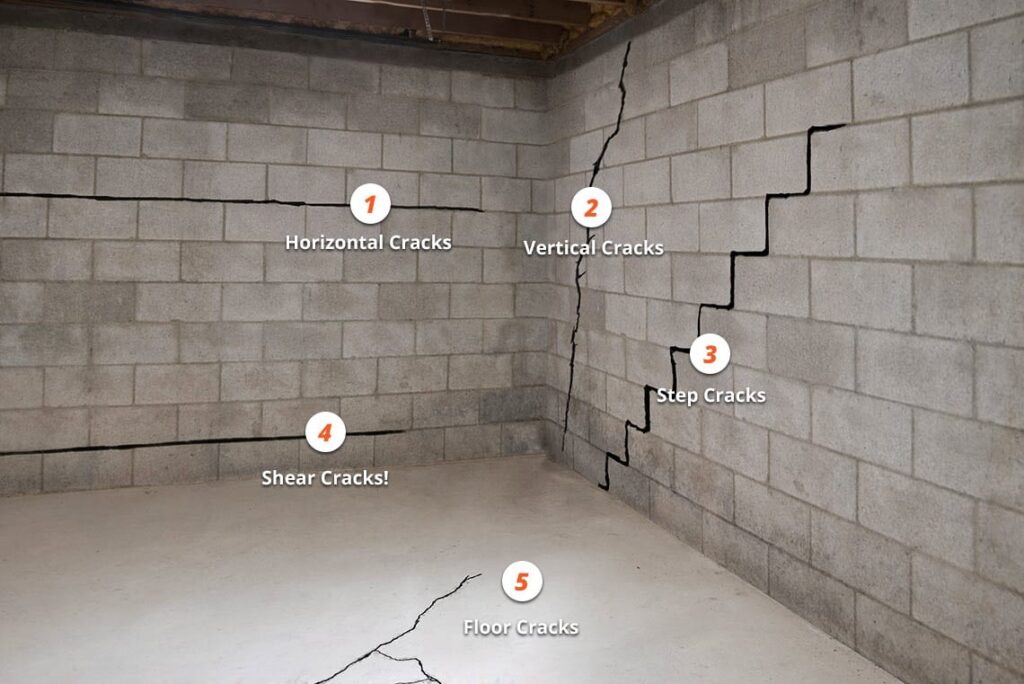
Foundational Issues
Foundation issues can create a lot of damage. You will find foundation issues are the most common cause of settling (see Is Foundation Repair Needed? article). Do your research and looks for obvious signs like foundation cracks. Measure crack widths for greater than 1/16 of an inch which strongly indicates foundation issues. If you suspect foundation issues, we highly encourage and recommend you have a professional foundation service do an inspection to rule it out.
Major Log Settling Contributors
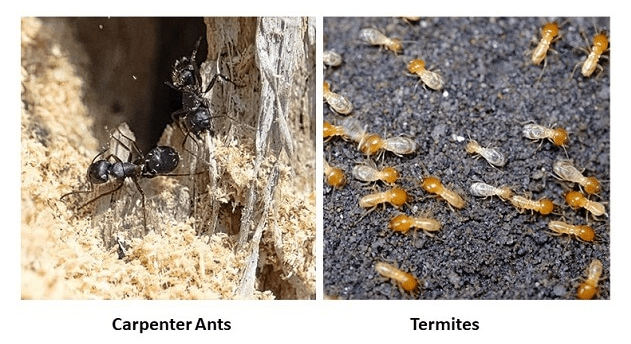
There are a few major log settling contributors. Major log settling contributors you need to be on the lookout for on your log cabin include:
- WDI: Wood Destroying Insects
- Lack of UV Protection
- Rotting Logs
- Log Checking
- No Slip Joints and/or Screw Jacks
These things can make logs settle at an exhilarating pace and cause significant issues that can go unseen. If you have Wood Destroying Insects (WDI), contact an exterminator or professional log master.
These things can make logs settle at an exhilarating pace and cause major issues that can go unseen. If you have Wood Destroying Insects (WDI), contact an exterminator or professional log master. 📋
WDI: Wood Destroying Insects
You might be thinking, “How are insects contributing to the settling of my home?” The simple answer is they are eating your log’s inner core, the soft, sweet stuff, making it incapable of evenly distributing the weight of the logs above it. These insects quietly eat away tunnels, making multiple highways inside the logs without considering the structural integrity. 📋
Carpenter Ants vs Termites Infestations
The most frequent wood-damaging insects (WDI) are carpenter ants and termites. Familiarizing yourself with their notable differences can help you stay ahead of costly removal and repairs. You should seek a professional exterminator if you find signs of an infestation. To further yourself with those differences, read “Carpenter Ant Frass vs Termite Frass: What Difference and How to Get Rid of Them.” Frass is debris or excrement produced by insects. Below is a picture of the differences in their frass. 📋
Frass=Insect Waste/Droppings
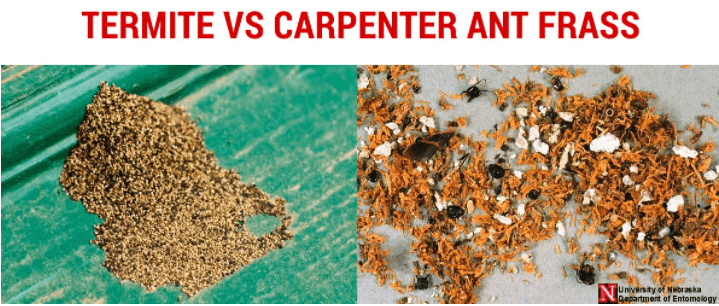
Lack of UV Protection
UV Protection is vital for the health of your logs like sunscreen is to human skin. Like our skin, logs can get sunburned, cracked, and peeled. Cracks or peals lead to wet logs. Wet logs are vulnerable to insects, mildew, and mold. Saturated logs will expand and contract. Therefore, a proper stain finish like Sascho Capture Log Stain’s unique elastic formula allows it to move freely as your logs move instead of cracking and peeling. Cracking and peeling can allow water into your logs, causing log rot. Log rot is like an open invitation for insects and their extended family to settle in for an endless buffet. 📋
Rotting Logs
If left unmanaged, rotting logs are very damaging to the structure of your log home. As a log rots, the logs around them will subsequently rot, especially the ones below it. Settling will occur as the logs become soft and unable to hold the weight of anything above them. As a log homeowner, it is vital to the health of your log home that you familiarize yourself with the types of log rot. By the way, if you have log rot, you invite wood-damaging insects or WDI. Oh, wait. I said that already. It must mean it is important. 📋

Log Checking
“Are you familiar with log checking?” Checking on a log is common and is sometimes an issue. Very few checks cause structural issues. Most log homeowners will discover checking as the logs dry out. The drying-out process can cause log checking, which is a dominant crack down the log beam. Checking on the upside of the log (which you need to keep an eye out for) can catch and hold moisture, allowing rot and decay to take hold. 📋
This can often go unseen as it attacks the log’s core and leads to much more damage to the wall. Like a decaying wisdom tooth rotten on the inside, the outside of the log may look fine but could only have a nice veneer. In short, you should take preventative measures when checking is on top of the log. 📋
No Slip Joints and/or Screw Jacks
Log cabins will settle. This is a fact that can rarely be avoided entirely. Log home builders, like Cowboy Log Homes, install slip joints or screw jacks to keep the home’s frames straight as the home settles to avoid future settling problems. Slip joints allow sliding as the logs settle without compromising the structural integrity. 📋
Slip Joints
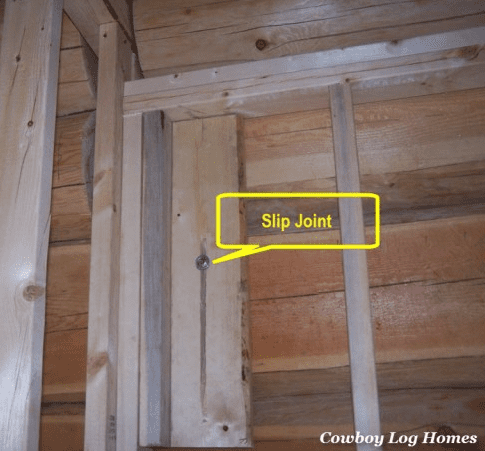
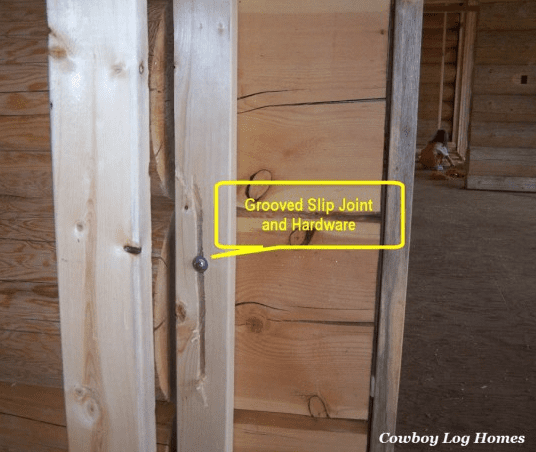

Screw Jacks
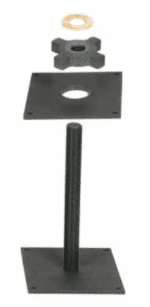
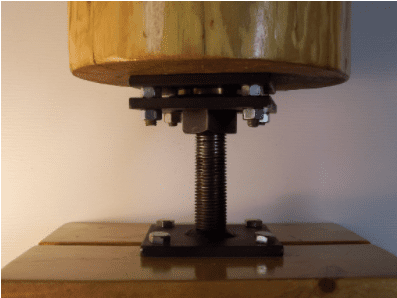

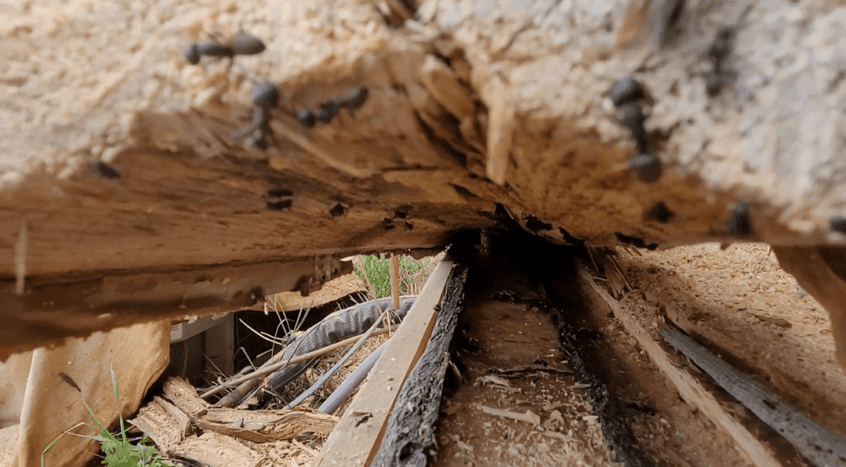
2 Comments on “Contributing Factors of Log Home Settling”
My wife and I live in a log home in the Northwest Territories, and the king post has a growing crack against the grain. The crack has grown approximately 2 inches over the past 2 years. My wife thinks that one side of the house is settling differently from the other. We live in a rural area and not able to get local professional help. Our primary log home person died of cancer in Spring 2023 so we’re having trouble finding help.
My condolences for your loss. It is difficult to find a reputable professional log cabin service company. We’re a dying breed, and many of our greats are retiring. Cracks or checks can be concerning, especially as they get bigger combined with the settling concern. I’m curious if it is reinforced with a steel plate and if the crack is exposed to weather elements or struggles to stay dry. When did the home last have maintenance? Typically, it is every 3-5 years, depending on location and routine cleanings. We’d be glad to look at your images and advise you. You may use the contact page and it will send them to us for review. Please review our policy for in-person visits to evaluate the needs of your log home by one of our experts. Otherwise, it is essential to remember that not all cracks/checks are a sign of a problem. However, if you notice signs of settling, you may want to contact your builder to have them adjust your jacks or slip joints. You can also contact a log home inspector to evaluate the structural integrity. On the InterNACHI site, you will be able to choose by state, certification, and additional inspection test abilities. Home inspectors and log home inspectors are not the same. Make sure the inspector is a certified log home inspector in “advanced search options”. There you can choose certifications such as log home, wood destroying insects, mold, radon, etc. Log home inspectors take on much more liability insurance and have taken additional training specific to log homes. They should thoroughly inspect using thermal imagining to locate weaknesses in the structure. If you have any further questions, feel free to ask here.